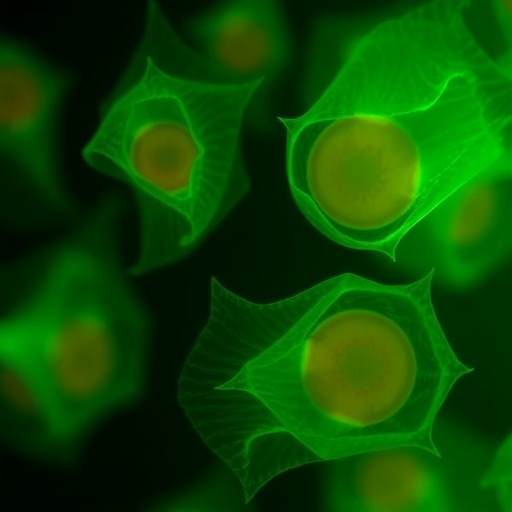
Credit: Claudio Contreras-Koob, International League of Conservation Photographers
For the first time, Smithsonian researchers and collaborators have designed a marine reserve network to protect species threatened by overfishing while boosting fishing yields on nearby fishing grounds, resolving a long-standing global "conserve or catch" conflict in marine conservation efforts.
A team led by scientists from the Smithsonian's Marine Conservation Program report in the journal Conservation Letters Nov. 17 that they have designed a model network of marine reserves off the Caribbean coast of Honduras, which can support the long-term preservation of spiny lobsters within the country's waters while also increasing fishing yields of the species in fishing areas outside the reserves' borders.
"Placing marine reserves across existing fishing grounds can often be very contentious," said Stephen Box, senior author on the study and lead marine biologist of the Marine Conservation Program at the Smithsonian Marine Station in Fort Pierce, Fla., a marine biodiversity and ecosystem research center of the Smithsonian's National Museum of Natural History. "Fishers may oppose plans they see as taking away a large proportion of their fishing area, which could threaten their income without clear benefits being apparent. Our design approach resolves this point of tension showing that it is possible to design reserve networks that provide measurable benefits to fishers, improving catches while sustaining the target population. This really is important as it can help align fisheries stakeholders and conservation practitioners behind a joint plan, removing a key obstacle to reaching sustainable conservation successes with economically important marine species."
Fully protected marine reserves are an important tool for managing the ocean's resources. By protecting the plants and animals that live within them, reserves protect a portion of exploited populations to recover and persist for future generations. But increasingly, researchers and conservationists are recognizing that for these reserves to succeed, they must balance their long-term conservation goals with the more immediate needs of local communities. Economic and sustainability objectives are often seen as being in conflict with one another, but according to the authors of the new study, both can and should be considered during the initial planning of a new reserve network and can be balanced effectively.
"We want to protect [the ocean's resources] so they will be available in the future, but we also want to let people keep using them," said Iliana Chollett, the lead author of the study and a postdoctoral fellow in the Marine Conservation Program and at the University of California, Davis.
Designing a reserve that will benefit local fisheries requires deep knowledge of the ecosystem and the species the reserve is designed to protect. With reliable data about animal behavior and ocean currents, computer models can calculate how a reserve will affect the abundance of a particular species in fishing areas outside its boundaries, as well as the reserve's impact on long-term sustainability. Such models have been used to assess existing or proposed reserves, but because they require massive amounts of data and intense computer processing, they have been considered impractical for use in the design phase to identify the best locations to place a new reserve network.
Chollett, whose research aims to find alternatives to dangerous and unsustainable fishing practices that are currently used in Latin America and the Caribbean, knew it would take a lot of time and effort to use this approach to design a new reserve–but she believed it could be done. She and her colleagues set out to design a network of reserves to restore and preserve populations of spiny lobsters in the waters off the northeastern coast of Honduras. The spiny lobster is the most economically valuable marine resource in the Caribbean and a key component of the commercial fishery in Honduras, but its numbers are believed to be threatened due to overfishing.
Researchers from the Smithsonian Marine Station, Florida Atlantic University, the Florida Fish and Wildlife Conservation Commission, the University of California, Davis and the University of Queensland worked together to collect and analyze the relevant biological and oceanographic data. Their analysis incorporated marine biologists' findings about how spiny lobsters grow, reproduce and die and how adult lobsters move across the ocean floor. Data about ocean currents, which can carry and distribute tiny lobster larvae far from the places where they hatch, and habitat maps of the seafloor were also essential.
The team used these data to determine where in the ocean lobster populations would increase if particular patches were protected by reserves and how these areas would seed and spill over into fished areas. They ran the model repeatedly, using the Smithsonian's high-performance computer to predict the effect of numerous reserve networks in order to optimize the design. They found that by protecting 20 percent of the fishing grounds, they could ensure the long-term survival of the lobster population while also increasing the numbers of lobsters expected to inhabit local fishing areas available to the local fishers. A crucial finding was that the network enabled a sustainable fishery only if current levels of fishing effort remain stable into the future.
Chollett says the reserve network that the team has designed could be an important component in a larger effort to introduce models and strategies to improve Honduran fishing practices and make them more sustainable. She also hopes the approach will be broadly applied to the design of marine reserves around the world.
###
Media Contact
Ryan Lavery
[email protected]
202-633-0826
http://www.naturalhistory.si.edu
############
Story Source: Materials provided by Scienmag




